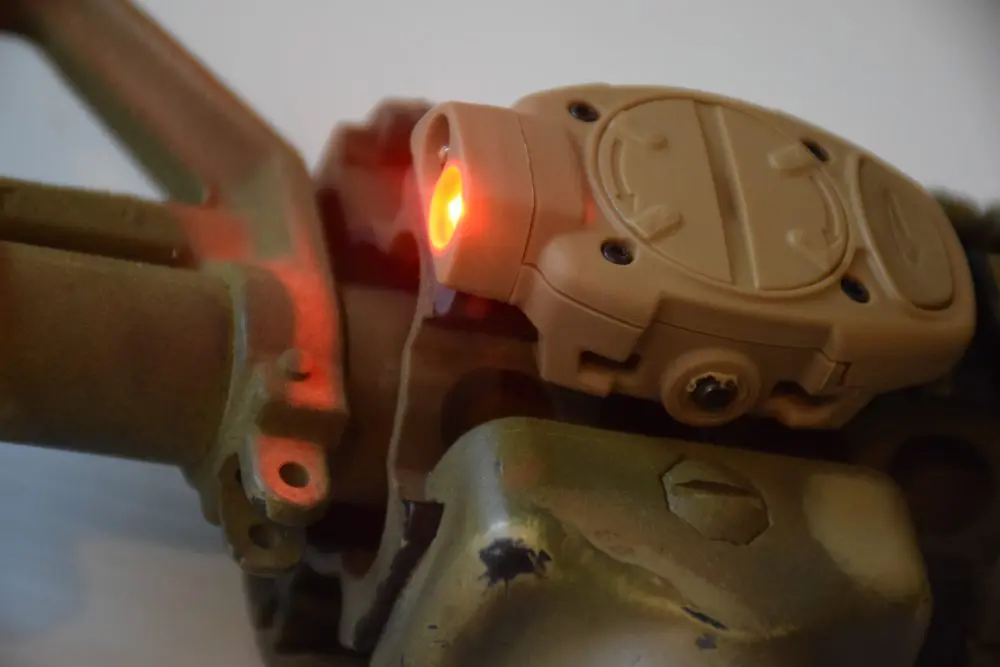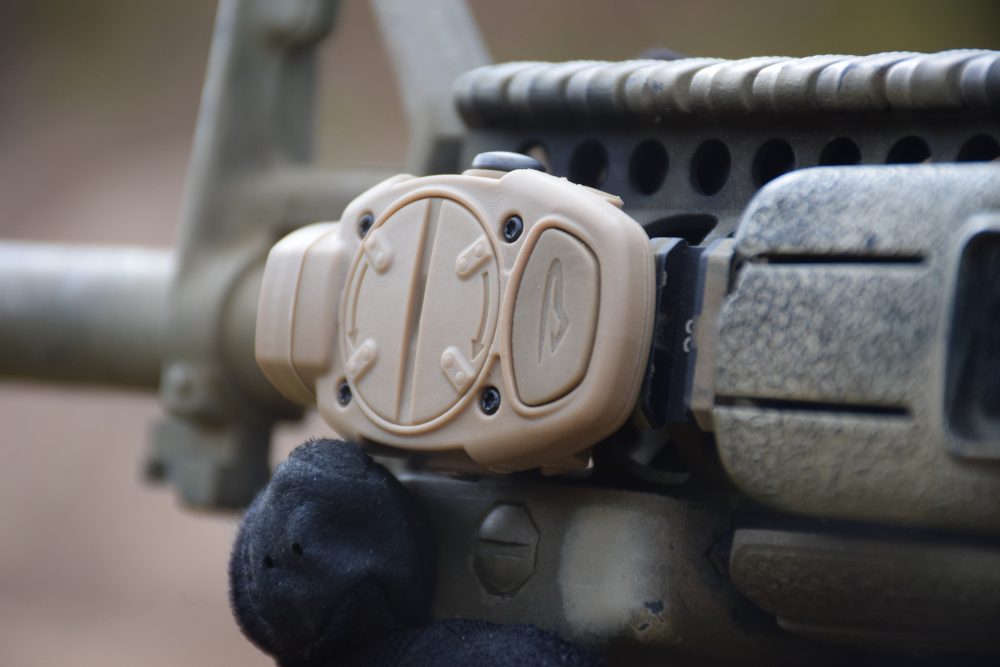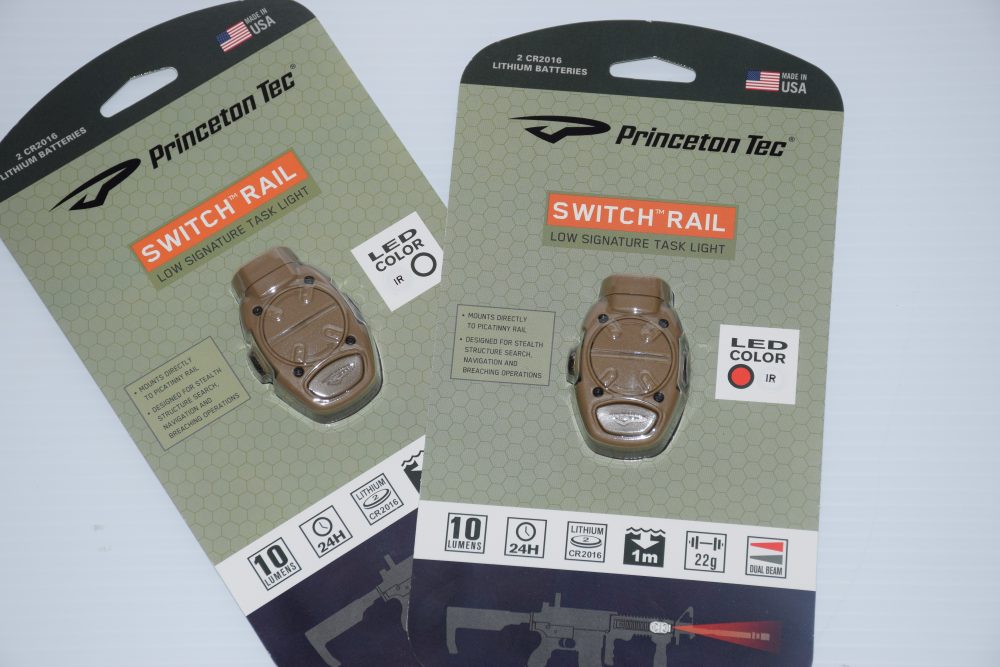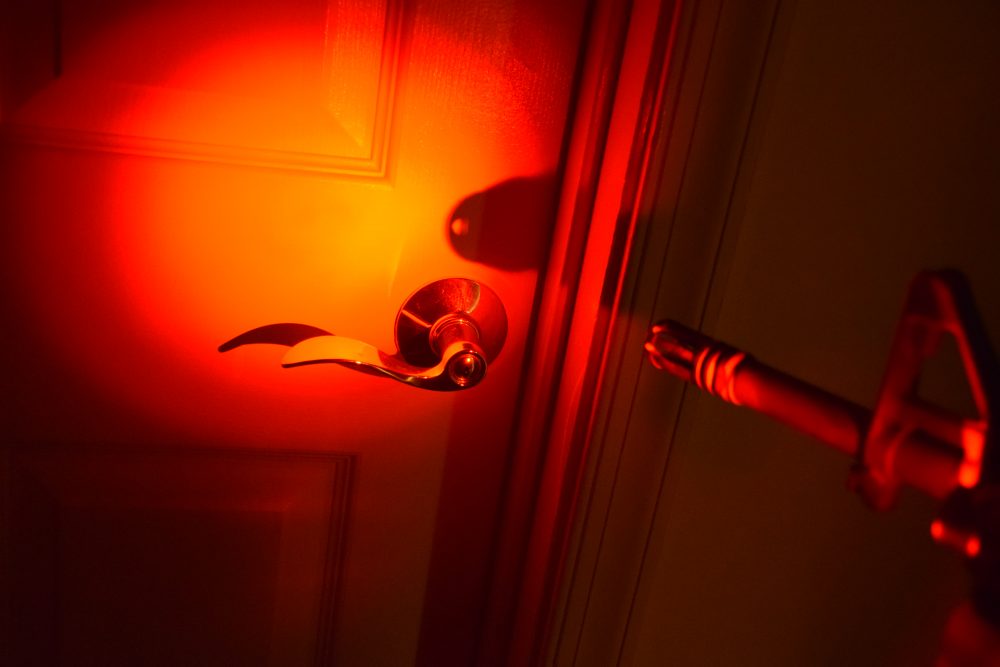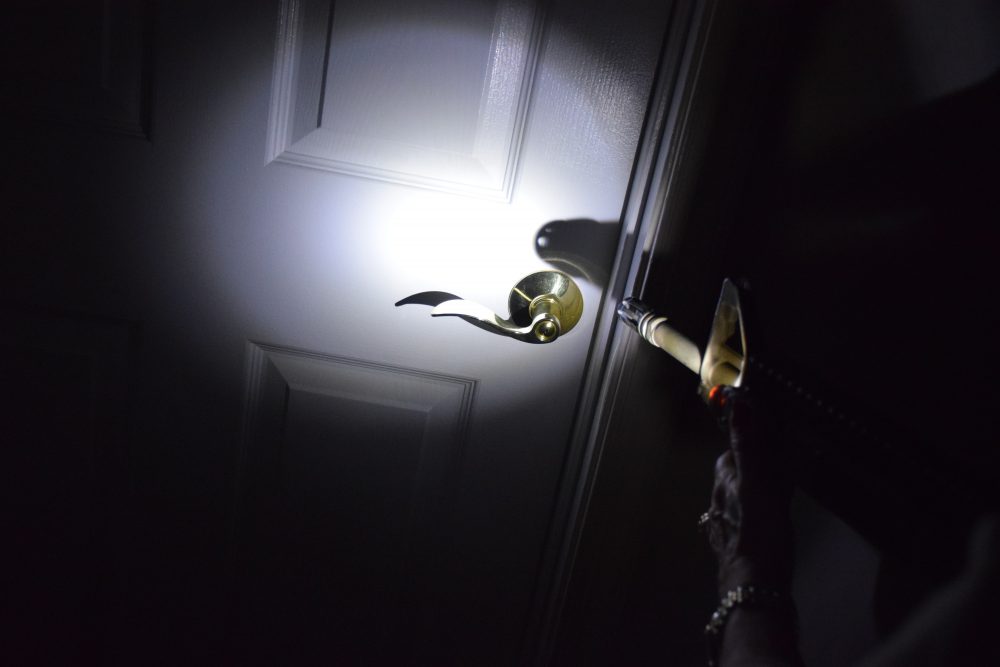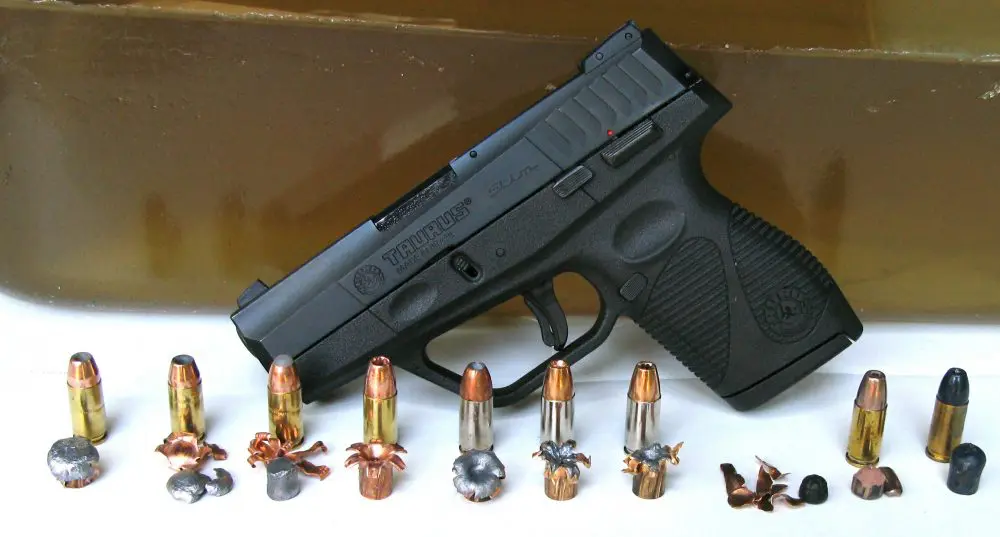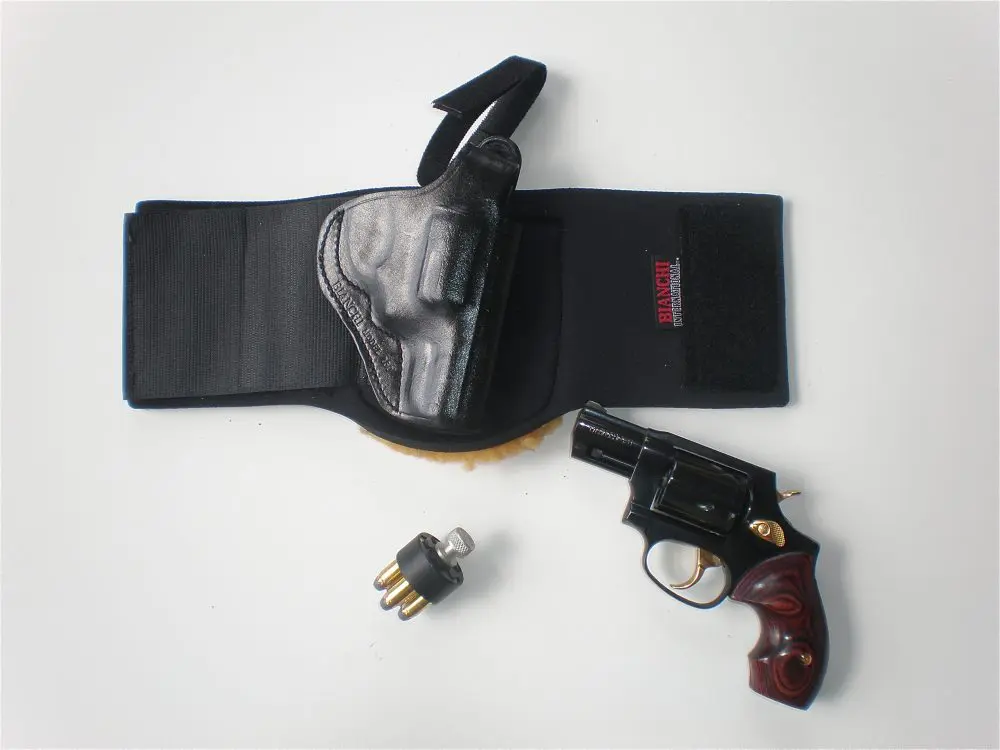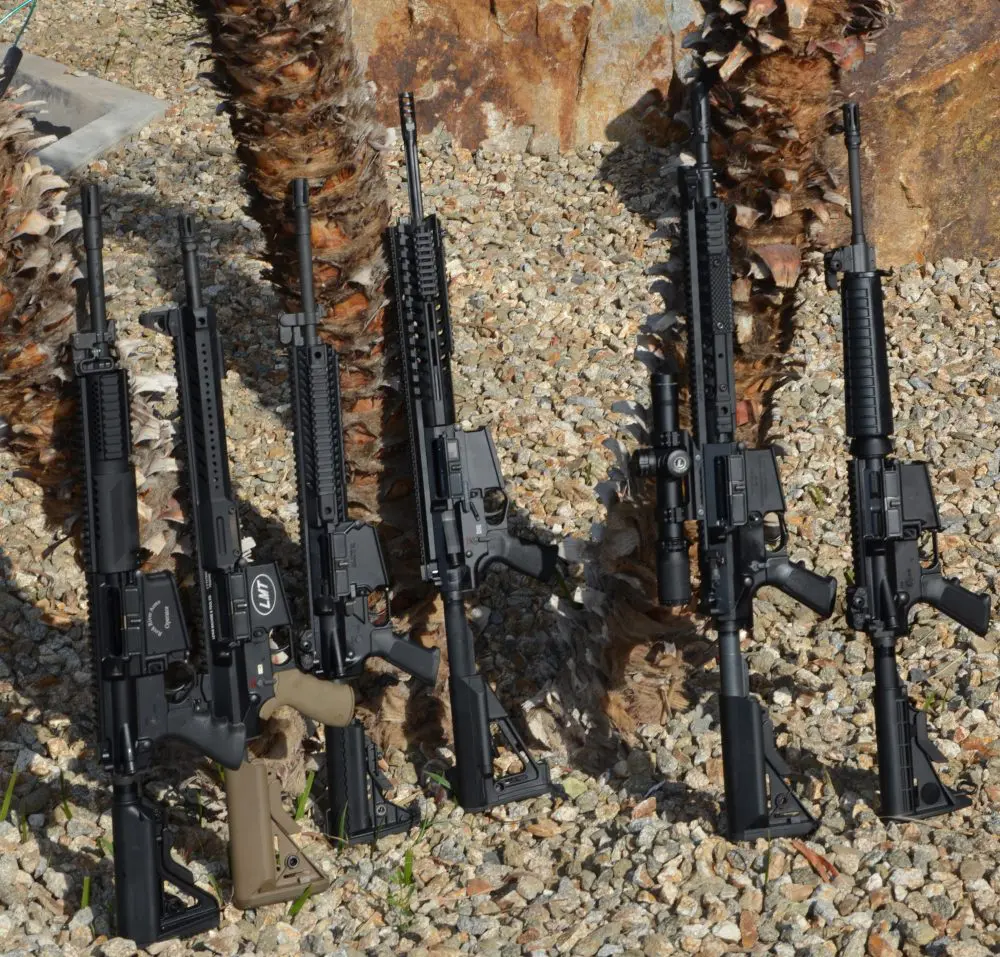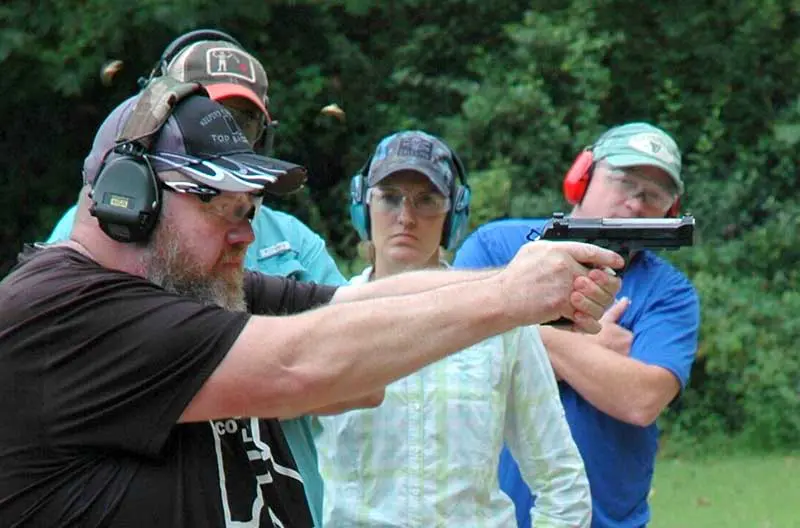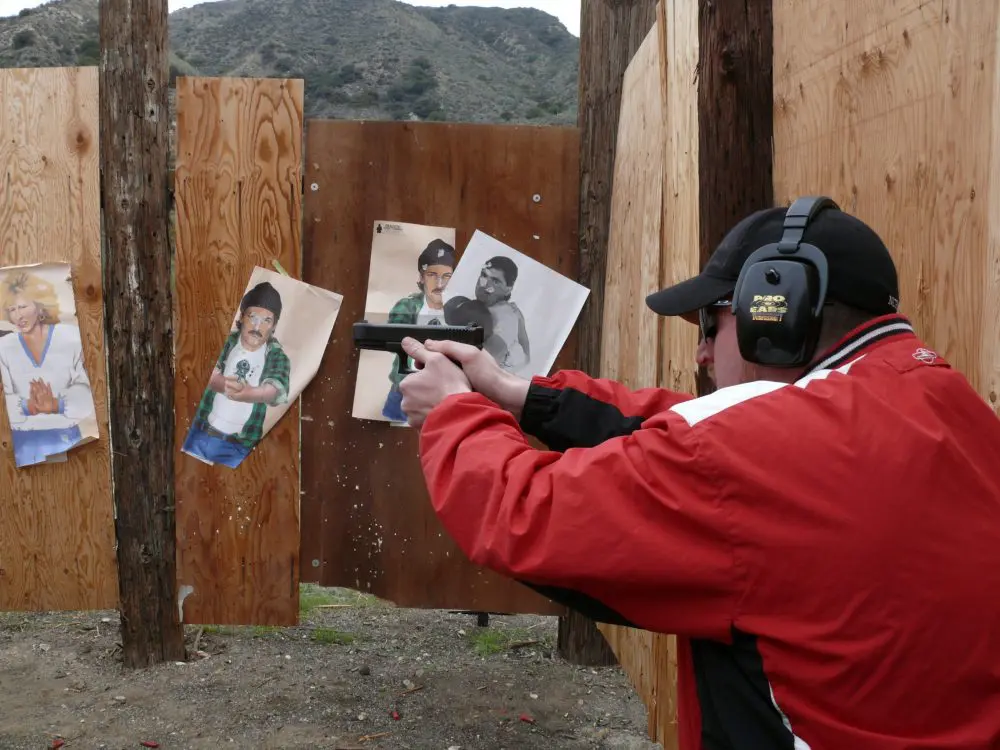People use lights for a variety of reasons. These lights may be in the visual or infrared spectrum, and they may be handheld or, for some, weapon or helmet mounted. For all users, the light needs to be powerful enough to satisfy their mission requirements. This might range from 100 lumens for a handheld pocket-carried light to 1,000 lumens for a weapon-mounted light (WML). Having said that, there is a time and place for a lower power light for specific applications.
For the masses, there are keychain lights—small disposable lights that attach to your keychain and are ostensibly used to find the orifice to put your key into. Pretty simple stuff, and for the intended use efficient and inexpensive. For hard use, they are sub optimal. They are fragile and therefore not reliable. Battery life is unpredictable, and there is no means to change the battery. For those within the tactical community, something better was needed.
Switch Rail on BCM Mid Length Carbine. Circle is the battery compartment. Function switch is at the back.
Table of Contents
EARLY LOW-POWERED LIGHTS
SureFire introduced what they called “navigation lights” in their M900 weaponlight. These were low-powered LEDs that produced minimal light for applications in which bright lights were contraindicated. SureFire also produced the HL-1 series of low-powered helmet lights, which let a person perform certain tasks with a hands-off light.
Princeton Tec followed with a very nifty helmet light—the MPLS—that allows easier function. Mike Griffin, owner of Austere Provisions, has been pushing for a long time to get an easily mountable rail-mounted low-signature light.
“I identified this need in Iraq. I routinely found myself in places where turning on my Scout light would highlight myself to potential enemy fire, but I needed enough light to see what was right in front of me such as in OP/LPs that were not occupied full time.”
He did what many did—superglue an Inova light to a rail panel and run with that. It worked after a fashion, but was fragile and when the battery died, the only answer was to get a new one, which was not always possible.
Light combinations vary. In this case, unit on the left is IR/White, and one on the right Red/IR.
John Chapman often says that the goal is to put out as little energy into the atmosphere as possible to accomplish the task. His context is operating within the IR spectrum, but we can apply this to white light as well. As with everything else we do every day, we must consider using the right tools for the job.
For a WML, you need between 500 and 1000 lumens to be able to acquire, identify and process a threat. When searching for lost car keys, a lesser amount of light may be called for. On the tac side and when working under NODs, too much illumination results in blooming. When moving up on a door, or especially when placing breaching charges, a much lesser amount of light is required. The mil side has pretty much gone to IR, while the cop side is almost universally white light. In either case, being able to discern a door, frame, hinge and such requires some illumination, but as Chappy says, no more energy than necessary.
As stated above, Mike’s field-expedient fix was to epoxy a green or red Inova light to a rail panel on his carbine, but it was sub optimal. Mike took his idea to Princeton Tec, and they eventually produced his idea.
Red LED on high. In reality, it is not as bright as the camera makes it appear.
BEHOLD THE SWITCH RAIL
The Switch Rail is small, light (under one ounce), and very capable. Each unit has primary and secondary lights. The primary light has both low and high outputs. The secondary is a single output only. To operate the primary (red) light on low, press once. This generates approximately 1.5 lumens. Pressing it twice puts it in high mode, raising the output to six lumens. If you hold the switch down for two seconds, you get 10 lumens from the secondary white light.
The power source is two 2016 batteries that give a run time of 24 hours. The Switch Rail attaches to a Mil Std 1913 (Picatinny) rail by means of a rail grabber-type mount. While this normally means mounted on a gun, it can also be mounted on a helmet rail.
White LED on a door
This is not meant to be used in place of a purpose-built WML. The output is too low to do that well. Where this light shines (no pun intended) is for close-range identification of specific objects. This could include as a cover man for a breacher to place his charge, or on a shotgun used for ballistic breaching.
At EAG Tactical, we have been running this light on a carbine for a few months, and it functions well in its intended role. The only issue we have encountered is placement. If you are using this on a breaching shotgun, it’s a no brainer. I place it on the front end of the rail, where my support-side thumb can easily function the light.
The carbine is another story. There is precious little space available on the front end of the carbine when you consider a weapon-mounted white light and multifunctional aiming laser, both of which are mission essential.
Red light on high power
The Switch Rail is a secondary piece of equipment and must be placed where it cannot interfere with sighting equipment. It’s a niche item that may not be for everyone. But for those who need this type of light, the Princeton Tec Low-Signature Task Light is the way to go.
Pat Rogers is a retired Chief Warrant Officer of Marines and a retired NYPD Sergeant. Pat is the owner of E.A.G. Inc., which provides services to governmental organizations and private citizens. He can be reached at [email protected].
SOURCE
Princeton Tec
(609) 298-9331
www.princetontec.com
